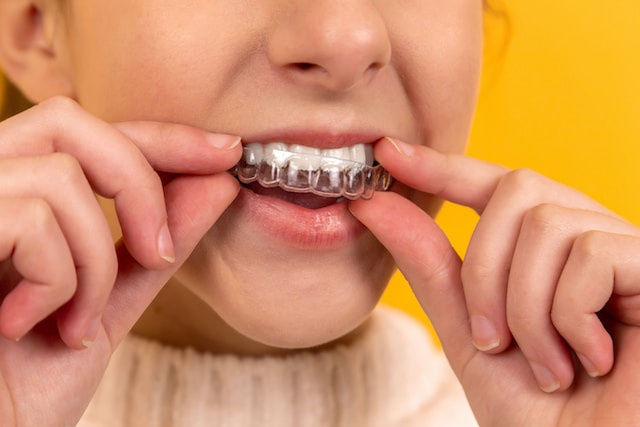A straight, healthy smile is a desirable asset that enhances your confidence and self-esteem. If your teeth are misaligned or crooked, you may feel self-conscious and avoid smiling, laughing, or speaking in public. This is where braces come in. They are orthodontic devices that help to align your teeth and improve your oral health. However, not everyone needs braces. Determining if you need braces or not depends on several factors. In this article, we'll discuss these factors, and give you some tips on how to determine if you need braces.
Why Do You Need Braces?
The most common reason for needing braces is a malocclusion, which is a misalignment of your teeth. This can happen due to genetics, habits like thumb-sucking, or due to an injury. Some of the common types of malocclusions include:
- Overbite: This is when your upper teeth protrude over your lower teeth.
- Underbite: This is when your lower teeth protrude over your upper teeth.
- Crossbite: This is when your upper teeth don't align with your lower teeth when you bite down.
- Open bite: This is when there's a gap between your upper and lower teeth when you bite down.
- Crowding: This is when your teeth are too close together, making it difficult to floss or brush.
- Spacing: This is when there are gaps between your teeth, which can occur due to missing teeth or small teeth.
If you have any of these malocclusions, you may need braces to correct them. However, not all malocclusions require braces. The severity of your malocclusion, your age, and your oral health will determine if you need braces or not.
Age
Orthodontic treatment can be done at any age. However, the ideal age for getting braces is between 10 and 14 years old. This is because the bones in your jaw are still growing, which makes it easier to move your teeth into the correct position. However, that does not mean that people over the age of 14 cannot get braces. Orthodontic treatment is available to people of all ages, and it's never too late to improve your oral health.
Severity of Malocclusion
The severity of your malocclusion will determine if you need braces or not. Mild malocclusions may not require braces, while severe malocclusions will require orthodontic treatment. A qualified orthodontist will assess the severity of your malocclusion and recommend the appropriate treatment. If your malocclusion is mild, your orthodontist may recommend clear aligners or retainers instead of braces.
Oral Health
Your oral health is an important factor in determining if you need braces or not. If you have gum disease or tooth decay, you may need to address these issues before getting braces. This is because orthodontic treatment can make it difficult to clean your teeth, which can lead to further oral health problems. Your orthodontist will evaluate your oral health before recommending braces.
Signs You Need Braces
Here are some signs that you may need braces:
- Crooked or crowded teeth: If your teeth are overlapping or crooked, it may be a sign that you need braces.
- Difficulty chewing or biting: If you have difficulty chewing or biting, it may be due to a misaligned bite, which can be corrected with braces.
- Speech problems: If you have a lisp or other speech problems, it may be due to a misaligned bite or teeth, which can be corrected with braces.
- Jaw pain: If you experience jaw pain, it may be due to a misaligned bite, which can be corrected with braces.
- Mouth breathing: If you breathe through your mouth instead of your nose, it may be due to a misaligned bite, which can be corrected with braces.
Types of Braces
There are several types of braces available, and your orthodontist will recommend the best type for your needs. Here are some of the most common types of braces:
- Metal braces: These are the most traditional type of braces and are made of metal brackets and wires.
- Ceramic braces: These are similar to metal braces but are made of clear or tooth-colored materials, making them less noticeable.
- Lingual braces: These are similar to metal braces but are placed on the back of your teeth, making them less visible.
- Clear aligners: These are clear plastic trays that fit over your teeth and gradually move them into the correct position. They are removable and almost invisible, making them a popular choice for adults.
Conclusion
Determining if you need braces or not depends on several factors, including the severity of your malocclusion, your age, and your oral health. If you have any signs of a malocclusion, such as crooked or crowded teeth, difficulty chewing or biting, or jaw pain, it's important to consult with an orthodontist. They can evaluate your oral health and recommend the best type of braces for your needs. Remember, improving your oral health can enhance your confidence and self-esteem, and braces are an effective way to achieve a straight, healthy smile.


No comments yet